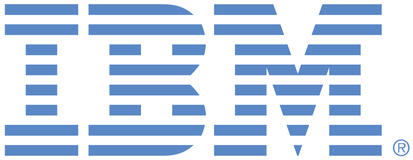
This portal is to open public enhancement requests against IBM Power Systems products, including IBM i. To view all of your ideas submitted to IBM, create and manage groups of Ideas, or create an idea explicitly set to be either visible by all (public) or visible only to you and IBM (private), use the IBM Unified Ideas Portal (https://ideas.ibm.com).
Shape the future of IBM!
We invite you to shape the future of IBM, including product roadmaps, by submitting ideas that matter to you the most. Here's how it works:
Search existing ideas
Start by searching and reviewing ideas and requests to enhance a product or service. Take a look at ideas others have posted, and add a comment, vote, or subscribe to updates on them if they matter to you. If you can't find what you are looking for,
Post your ideas
Post an idea.
Get feedback from the IBM team and other customers to refine your idea.
Follow the idea through the IBM Ideas process.
Specific links you will want to bookmark for future use
Welcome to the IBM Ideas Portal (https://www.ibm.com/ideas) - Use this site to find out additional information and details about the IBM Ideas process and statuses.
IBM Unified Ideas Portal (https://ideas.ibm.com) - Use this site to view all of your ideas, create new ideas for any IBM product, or search for ideas across all of IBM.
ideasibm@us.ibm.com - Use this email to suggest enhancements to the Ideas process or request help from IBM for submitting your Ideas.

IBM does not intend to provide a solution to this request at this time, so it is being closed. .
IBM believes you can use the existing DDM/DRDA exit point to implement a solution for this problem.
The CAAC has reviewed this requirement and recommends that IBM not implement this request. We are in agreement with Scott's recommendation below -- use the exit point.
Background: The COMMON Americas Advisory Council (CAAC) members have a broad range of experience in working with small and medium-sized IBM i customers. CAAC has a key role in working with IBM i development to help assess the value and impact of individual RFEs on the broader IBM i community, and has therefore reviewed your RFE.
For more information about CAAC, see www.common.org/caac
For more details about CAAC's role with RFEs, see http://www.ibmsystemsmag.com/Blogs/i-Can/May-2017/COMMON-Americas-Advisory-Council-%28CAAC%29-and-RFEs/
Nancy Uthke-Schmucki - CAAC Program Manager
Hi,
Can you please elaborate as to why you cannot use the existing DDM/DRDA exit point to implement a solution for this problem?
I would expect that you can utilize QSYS2.PARSE_STATEMENT() to recognize an in-coming UPDATE, DELETE, etc.
Regards, Scott Forstie
forstie@us.ibm.com
Due to processing by IBM, this request was reassigned to have the following updated attributes:
Brand - Servers and Systems Software
Product family - Power Systems
Product - IBM i
Component - Db2 for i
Operating system - IBM i
Source - None
For recording keeping, the previous attributes were:
Brand - Servers and Systems Software
Product family - Power Systems
Product - IBM i
Component - Security
Operating system - IBM i
Source - None